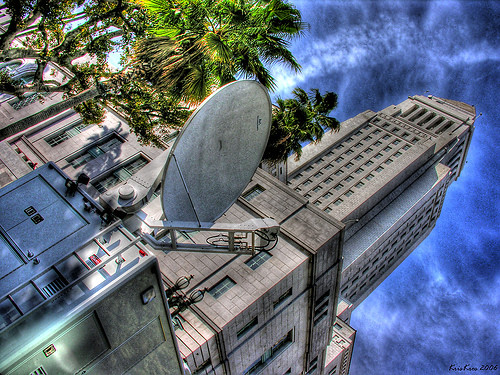A good discussion on A VC

Fred over at A VC started a good discussion about the future of media. I posted a lengthy response, and figured I should throw it up here as well.
Here's most of Fred's original post
A VC: Disaggregated Media: "Disaggregated Media
Traditional media is about vertical integration, from the creation of the content, to the display of it, to the distribution of it.
There have been some important moves to disaggregate and organize around a horizontal model in recent years. Cable is a good example of that. The production of the content is divorced from the distribution of it in the cable model. CNN produces a 24 hour news channel but Comcast gets it to your home.
The Internet is forcing the entire media business into a disaggregated horizontal model where the creation of the content will happen in one place, the editorial function will happen in another, the production will happen somewhere else, and the distribution will happen in yet another manner.But these horizontal layers are not going to look like slices of the vertically oriented media company of the past. You won't see a layer of content producer companies selling content to a layer of editorial companies selling content to a layer of distribution companies.
These layers are going to be dominated by lighweight web services (think google or craigslist) that will empower the users themselves to do this work. People talk about user generated content as if there is another kind. There isn't. I love the story about the animated video created for Firefox Flix that prompted the people at Firefox to say "that was done by a professional". Maybe so, but he is still a user and a fan, and as professional as it seems, it is user generated content. Same is true with Om Malik. Is he a traditional journalist or a blogger? Does it matter?
Editors are quickly being replaced by services like Digg or the new Netscape where people decide what goes up on the front page and what does not. And we are in the top half of the first inning when it comes to a people powered editorial function. This is where I see a lot of action happening in the coming years.
And distribution? Well for one, its all going via IP; wire line, powerline, coax, wifi, wimax, 3g, and who knows what other forms of IP. But people powered distribution is the big story here too. Whether its emailing links, embedding videos onto social network pages and blogs, or superdistribution of music and video where everyone participates in the value chain, we are seeing the end users participate actively in the distribution of media.
So when I get a business plan that suggests that all of this can be packaged into a single company, a new media company for the digital age, I cringe. Media will not be delivered from creation to consumption by a single entity in the digital age. Anyone who tries will fail. I am sure of it.
Here was my response (actually to his second post on the subject):
I agree that disagreggation is happening and will continue to happen, though your cable example of cnn can be broken down one step further: Independent content production companies produce shows for networks like, say, Discovery Health. Discovery then pays the Time Warner for space on the network.
A point I think you missed in your posts, though - The commodity that disappears as media moves online and on demand is time and space. The real estate that Time Warner sells to Discovery is no longer valuable because a) they no longer have exclusive or near exclusive access to that geographical region, b) search means that much, much more content that can fit in one space (or within one media network), and c) the relationship between airtime and ad dollars that used to be the main source of revenue for the middleman (cnn in your example or discovery in mine) becomes much less important.
What replaces these elements on the web and on demand is traffic. Traffic drives all revenue, and without restrictions in time and space, traffic becomes much more difficult to come by.
That's why my prediction is that content will shift from a "broadband channel" model, where you go to a specific spot on the web to see the content you want, to more contextual syndicated distribution - just like the advertising models you describe in part two of this post.
Google is already now incorporating video ads into it's adsense program. Forget the ad part, to me that just seems like a perfect vehicle for distributing high quality content in places where the traffic already exists.
Whether the monetization of this model would be the reverse of adsense (websites paying for high quality entertainment content in the same kind of a bidding system) or would be more of a shared model (content producers pay for the space on the sites just like adsense, and then sell embedded advertising) I don't know.
But either way, the end result of this model would be media networks that work like ad networks - where you would sign up for the X network and pay for the high quality X content you know and trust to be syndicated on your site contextually.
Great jumping off point for a discussion - I also take issue with your assertions about user generated content... there is a reason that shows like 24 cost 2 million an episode to produce, and a reason we will continue to consume that kind of content at a much more meaningful level than the firefox ad, no matter how clever and professionally produced it is. But this is already too long, and I'll save that for another time.





0 Comments:
Post a Comment
<< Home